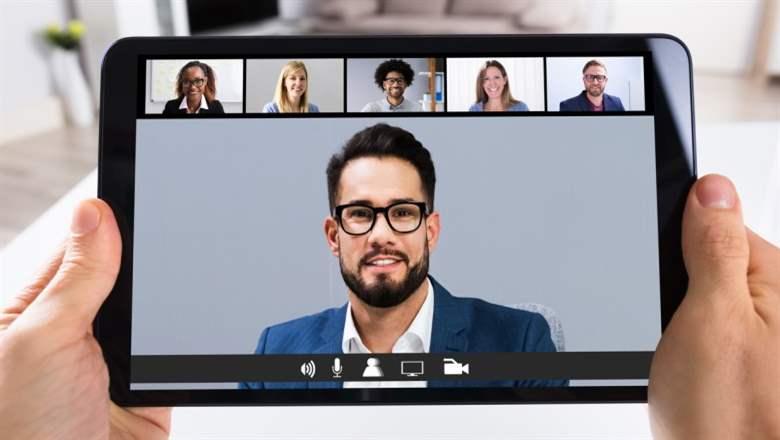Karli Susi
Karli Susi, MBA, is chief operating officer at McKinley Advisors in Washington, DC.

Prior to the pandemic, when most organizations expected staff to be in the office full-time, onboarding was mainly done face to face. Since many organizations have moved to virtual or hybrid offices, it’s important to update your onboarding process to match.
The Great Resignation of 2021, where roughly 33 million workers quit their jobs, proved that people want to work for organizations who treat them well and prioritize work-life integration. There is no better time for your organization to set the tone of how well you plan to support staff—both in your words and actions—than when bringing on a new employee.
Until the pandemic hit, our onboarding efforts at McKinley Advisors, like most companies, relied heavily on the physical office space. New hires were greeted by their managers, who showed them around, introduced them to colleagues, and got them settled at a desk with a computer and system access. Coffee breaks, lunch breaks, and team meetings helped new employees learn about the company, its people, and its norms. It all was very social and interactive—until 2020 came around. Like so many others, we had to shift our reliance on physical space and focus on providing virtual onboarding. Here are some tips for overhauling your onboarding playbook to meet today’s needs.
I (Tim) joined McKinley Advisors on March 2, 2020, and spent exactly eight days in the office, grabbing lunch with new colleagues, watching them engage with association clients, and more. On the eighth day, COVID-19 restrictions started, and we went fully virtual.
To connect with fellow staff, I created a spreadsheet of all 40 colleagues and began scheduling meetings with them for virtual coffees and lunches. This helped me find connections outside the work, understand who does what, and determine where I could provide value to them and the organization.
When we proactively reduce barriers and speak the “unspoken norms” at the outset, we not only help the employee accelerate their ability to contribute, but we also send an important message about the value of the individual and set the tone for transparency and belonging as foundational elements of our organization’s culture.
I was comfortable sending calendar invites to people at different hierarchies. However, not everyone feels this level of comfort. Given the value in connecting people in the digital workspace, we wanted to find a way to make this process easier for all. So, we leveraged a Slack app called Donut to automate virtual coffee scheduling. Every few weeks, two employees get a message in Slack saying they’re lined up to meet for virtual coffee. Staff here have been appreciative for the “robots” helping them build valuable connections.
One of the most important things we learned in building our new processes is just how much “onboarding” happens in the margins. Yes, it’s important that a new hire has a computer, knows their team, and can access company documents. But none of that is what makes a person feel welcome and set up for success.
To effectively onboard, we needed to bring all of those unspoken, undocumented ways of working into the daylight. Now, our onboarding process begins two weeks prior to the start date with a series of emails from various staff covering things like technology and benefits. Emails also introduce the new employee to their dedicated McKinley “buddy,” who checks in with them daily during their first week, and weekly after that. The buddy is explicitly positioned as the person you can take all your random questions to—someone who is not your manager who can help you learn how to do your new job.
We also used input from everyone on staff to create explicit working norms that help clarify the ways of working that haven’t historically been written down and shared. For example, we created “Communication Norms” that outline everything from how quickly you should respond to a message on email and Slack to when and how you should recognize a coworker’s good work. These are things that a new hire would pick up over time, but in a fully remote and often isolated environment, knowing how to “swim with the stream” from the onset helps people feel confident early on.
We also ask for feedback and adjust when something is not working as we intended. Recently, one of our new hire focus groups revealed that the first couple of weeks of work felt like “drinking from a fire hose.” They couldn’t put their hands on all the bits of information they knew they received early on. Now we’re working on a one-page “cheat sheet” for new hires, covering the things they need to access on a regular basis: links to our major standard operating procedures and answers to frequently asked questions. We’re also starting to record onboarding sessions using tools like Loom, so new hires have a “self-service” option as well.
Another idea to assist with onboarding is to ask all employees (new and current) to share a personal user manual to make it easier to get to know them and their preferences. This may include:
The idea is that it gives people a chance to set the tone for themselves on how best to collaborate with them. It also promotes individuality and highlights that we are all different, and great work cultures are ones who recognize and leverage our multitudes of differences.
While there are plenty of things that we’ll be happy to leave behind as the pandemic subsides (happy hours on Zoom), onboarding over the past two years has taught us many important lessons that should stick around. When we proactively reduce barriers and speak the “unspoken norms” at the outset, we not only help the employee accelerate their ability to contribute, but we also send an important message about the value of the individual and set the tone for transparency and belonging as foundational elements of our organization’s culture.